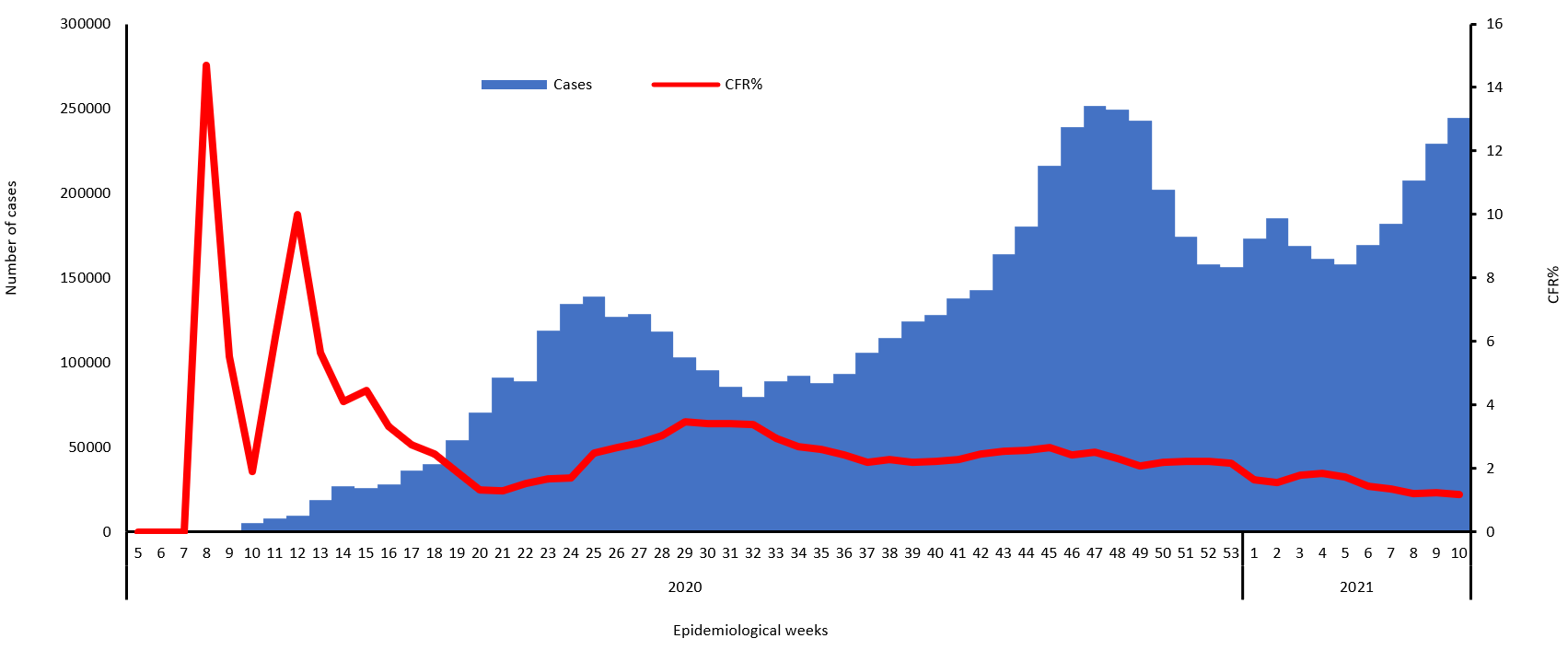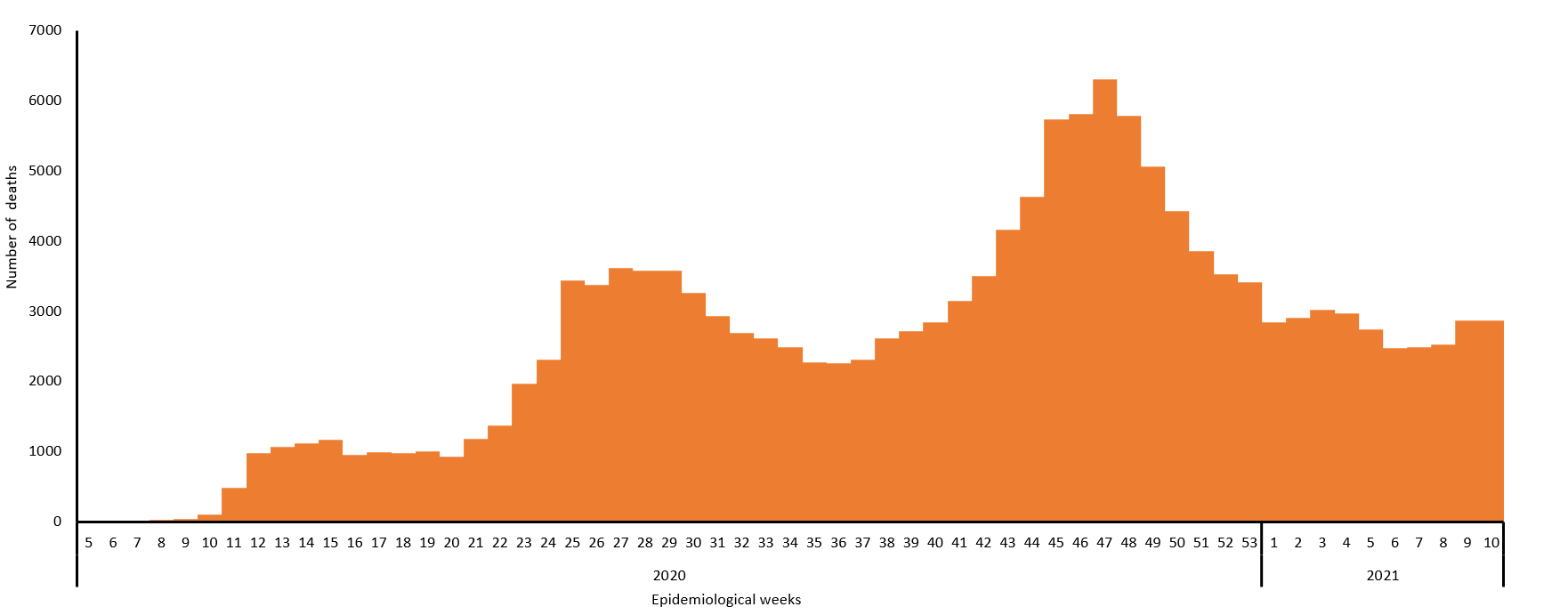The coronavirus disease COVID-19 continues to spread at the regional and global levels. As of 13 March 2021, the global cumulative incidence reached 118 759 388 reported cases and 2 634 379 associated deaths with a case fatality ratio (CFR) of 2.2%. Meanwhile, the 22 countries of the Eastern Mediterranean Region (EMR) have reported a total of 6 865 012 cases, which represent about 5.8% of the global count, with 150 282 associated deaths (CFR 2.2%). Most countries in the Region are in the community transmission phase.
Since the beginning of the outbreak, the country that has reported the highest number of total cases in the Region is Islamic Republic of Iran (1 739 360 cases; 25.3% of the Region’s total), followed by Iraq (754 318; 11%) and Pakistan (605 200; 8.8%). Islamic Republic of Iran also reported the highest number of total associated deaths (61 142; CFR 3.5%) followed by Iraq (13 719; CFR 1.8%) and Pakistan (13 508; CFR 2.2%). The highest CFRs were reported by Yemen (24.6%) followed by Syrian Arab Republic (6.7%), while the lowest CFRs were reported by Qatar (0.2%) followed by United Arab Emirates (0.3%) and Bahrain (0.4%).
During epidemiological week 10, the Region reported an increase of 6.5% in cases when compared to the previous week (244 432 cases compared to 229 524 cases). On the other hand, a steady trend was observed for associated deaths (2869 deaths compared to 2868 deaths).
Yemen, Jordan and Somalia reported a relative increase in COVID-19 activity in week 10. The cumulative number of cases increased from 2448 to 2775 in Yemen (13.4% weekly increase), from 421 415 to 469 000 in Jordan (11.3% weekly increase) and from 8041 to 8946 in Somalia (11.3% weekly increase). Somalia, Jordan and Lebanon had the largest relative increase in deaths.
In terms of testing, a total of 104 557 575 laboratory PCR tests were conducted since the start of the outbreak across the Region including 3 787 719 tests in week 10, which shows a 3% increase compared to the previous week (3 672 771). The highest number of PCR tests were reported from United Arab Emirates (33.6 million), followed by Saudi Arabia (14.3 million) and Islamic Republic of Iran (11.7 million). The United Arab Emirates and Bahrain are performing the highest rates of testing per capita (3397/1000 and 1933/1000, respectively). The average positivity rate for the Region is 6.6%. WHO recommends a positivity rate of around 3–12% as a general benchmark indicating adequate testing, which was achieved in most countries of the Region.
Meanwhile, COVID-19 vaccination continue across the Region. The total number of doses administered so far in 19 countries include 6 578 881 in United Arab Emirates, 4 992 783 in Morocco, 2 381 158 in Saudi Arabia, 551 197 in Bahrain, 322 000 in Kuwait, 380 000 in Qatar, 85 948 in Oman, 72 883 in Pakistan, 101 230 in Jordan, 104 427 in Lebanon, 60 486 in Islamic Republic of Iran, 45 000 in Afghanistan, 4871 in occupied Palestinian territories, 2177 in Iraq , 2076 in Tunisia and 1315 in Egypt. No data is available for Djibouti, Sudan and Syrian Arab Republic.
Supporting countries in the Region
The regional incident management support team continues to coordinate the response and provide technical support to countries and partners in the Region in the areas of coordination and partnership, surveillance, laboratory capacity, clinical management, infection prevention and control, risk communication and community engagement, points of entry according to the International Health Regulations (2005), research, health systems, and essential health services among others.


For more data from the Region, please visit the COVID-19 dashboard.
Subscribe to the monthly infectious hazard preparedness newsletter of WHO’s Health Emergencies Programme for latest data and analysis on epidemic- and pandemic-prone diseases, as well as news on outbreak preparedness and response within WHO’s Eastern Mediterranean Region.


